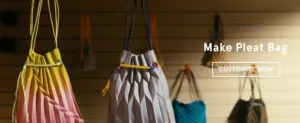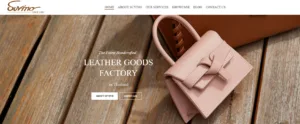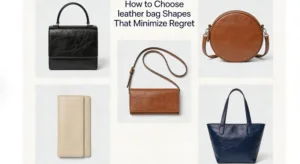When it comes to luxury and fashion, Louis Vuitton never fails to capture attention. Known for its exquisite designs, top-notch craftsmanship, and iconic style, Louis Vuitton bags have become a symbol of status and taste. But why are they so expensive? Is it just the brand name, or is there more behind the price?
In this article, we will explore the reasons behind the high cost of Louis Vuitton bags. From meticulous craftsmanship and premium materials to limited editions and rich brand heritage, we will reveal what makes Louis Vuitton bags so coveted. Popular items such as Louis Vuitton sandals, Louis Vuitton wristlet, and pink Louis Vuitton bag showcase the brand’s unique charm and appeal to luxury enthusiasts worldwide.
Contents
Louis Vuitton Bags – What Makes Them Special?

Louis Vuitton bags are not merely accessories; they are portable statements of style, heritage, and luxury. Designed from premium materials such as canvas, leather, and metal hardware, these bags serve the practical purpose of carrying, protecting, and organizing personal belongings, while simultaneously reflecting the owner’s taste and status. Beyond their fundamental function of keeping items organized, Louis Vuitton bags excel in multiple dimensions that elevate them from utilitarian objects to timeless symbols of craftsmanship and elegance. The inclusion of a Louis Vuitton box and dustbag with each purchase not only protects the bag but also enhances the sense of exclusivity and value.
1. Heritage and Brand Legacy
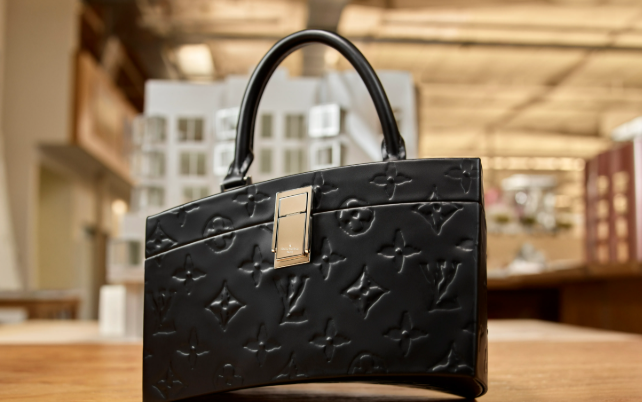
Louis Vuitton was founded in 1854 in Paris, originally crafting high-quality travel trunks for aristocrats and explorers. Over more than 160 years, the brand has become a benchmark in the luxury goods market, synonymous with refinement, innovation, and exclusivity. The heritage of Louis Vuitton extends beyond mere storytelling—it shapes design philosophy, material selection, and meticulous bag production standards. Every bag carries a piece of this legacy, making it both a practical tool and a collector’s treasure. Collectors often compare Hermes vs Louis Vuitton to understand differences in craftsmanship, heritage, and exclusivity, reflecting Louis Vuitton’s strong position in the luxury market.
2. Iconic Design and Signature Styles

Louis Vuitton bags are instantly recognizable thanks to their classic Monogram and Damier patterns, as well as signature silhouettes such as the Speedy, Neverfull, and Alma. The design process takes into account bag storage capacity and modularity: larger totes accommodate laptops and documents, while smaller crossbody bags provide compartments for essentials like wallets and phones. Strategic use of bag internal pockets, padded compartments, and adjustable dividers allows users to organize their belongings efficiently. Limited edition releases and seasonal variations enhance exclusivity, ensuring that each bag remains a unique expression of style. Many collectors also pay attention to accessories like the Louis Vuitton dust bag, LV dust bag, or Hermes Louis Vuitton dust bag, which preserve the bag’s condition and authenticity over time.
3. Craftsmanship and Attention to Detail
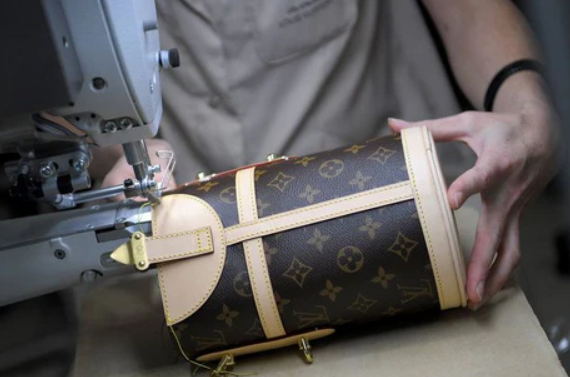
The hallmark of Louis Vuitton is meticulous craftsmanship. Each bag is hand-stitched by skilled artisans, with precise leather cutting, reinforced stress points, and high-quality hardware installation. This craftsmanship ensures durability and protection, as materials like full-grain leather and coated canvas resist wear and tear, while brass fittings and high-grade zippers provide long-lasting functionality.
Ergonomic considerations are also key: adjustable straps, padded shoulder panels, and balanced weight distribution ensure comfortable carrying, whether by hand, on the shoulder, or crossbody. Advanced features such as secure closures, RFID-protected pockets, and hidden compartments further enhance security, protecting valuable items from theft and environmental exposure.
Finally, Louis Vuitton bags communicate style, brand identity, and emotional value. Their contours, textures, colors, and hardware convey sophistication, while packaging—including the Louis Vuitton box and dustbag—creates a luxurious unboxing experience. Each bag serves not only as a functional accessory but also as a personal statement and collectible piece that embodies heritage, quality, and prestige.
What Role Do Materials Play in Louis Vuitton Pricing?

For procurement specialists, factory designers, and B2B buyers, understanding the materials behind Louis Vuitton bags is key to explaining their pricing. Louis Vuitton’s high-end positioning relies not only on brand legacy and craftsmanship but also on premium materials and packaging solutions such as the Louis Vuitton box and dustbag. Every element—from leather and canvas to metal hardware and protective packaging—contributes to production costs, supply chain considerations, and ultimately, resale value. Comparing Hermes vs Louis Vuitton also highlights differences in material sourcing, finishing, and exclusivity, which are essential for strategic procurement decisions.
1. Premium Leathers and Canvas
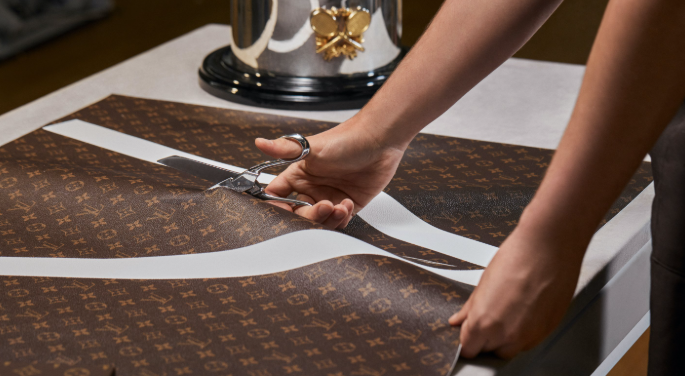
Louis Vuitton primarily uses full-grain cowhide leather, Monogram and Damier coated canvas, and rare exotic skins, all sourced with strict quality control.
Material Sourcing & Origin:
- Full-grain leather: Italian and French tanneries, treated with vegetable tanning and semi-aniline finishing for durability and natural texture.
- Monogram/Damier canvas: Produced in France, coated with PVC for water resistance while retaining flexibility.
- Exotic skins: Imported from certified farms in Africa and South America, inspected for pattern uniformity and quality.
Processing & Craftsmanship Requirements:
- Leather cutting ensures Monogram alignment; canvas coating is heat-pressed under controlled conditions.
- Exotic skins undergo careful stretching, dyeing, and polishing to achieve uniform color and texture.
Materials Comparison Table:
| Material Type | Origin | Processing Requirements | Cost Level | Durability | Notes |
|---|---|---|---|---|---|
| Full-grain leather | Italy, France | Vegetable tanning, semi-aniline finishing | 1-20$ | High | Ages beautifully, natural texture |
| Monogram / Damier coated canvas | France | PVC coating, heat pressing | 10-50$ | High | Water-resistant, signature look |
| Exotic skins (Alligator/Ostrich) | Africa, South America | Stretching, dyeing, and polishing | 100-1000$ | Very High | Rare, limited availability |
B2B note: Each bag is packaged with a Louis Vuitton dust bag or LV dust bag, protecting the product during shipment and storage—this is a key selling point for distributors and retailers.
2. Durable Hardware and Finishing

Louis Vuitton invests in zippers, buckles, rivets, and lining fabrics to ensure both aesthetics and functionality.
Procurement & Origin:
- Zippers: YKK (Japan) and Lampo (Italy), polished brass coating for durability.
- Buckles & rivets: France or Italy, custom-plated brass, corrosion-resistant.
- Lining fabrics: European cotton canvas or microfiber for durability and a premium feel.
Hardware Comparison Table:
| Component | Supplier / Origin | Material & Finish | Cost Level | Durability | Notes |
|---|---|---|---|---|---|
| Zippers | YKK (Japan), Lampo (Italy) | Brass or metal alloy, polished/plated | 3$-10$ | High | Smooth operation, corrosion-resistant |
| Buckles/Rivets | France, Italy | Brass, gold/silver plating | 3$ | High | Custom engraved options |
| Lining fabrics | Europe | Cotton canvas, microfiber | 5$ | Medium | Protective, enhances interior feel |
For B2B buyers, LV dust bag and Louis Vuitton box inclusion ensures safe delivery and maintains brand perception—crucial for bulk orders or wholesale shipments. Comparing Hermes Louis Vuitton hardware and packaging can help procurement teams evaluate cost vs. perceived value.
Louis Vuitton’s pricing reflects the combination of premium materials, precise craftsmanship, and high-quality leather bag packaging. From full-grain leather and signature coated canvas to polished brass hardware and protective Louis Vuitton box and dustbag, every element is chosen to maintain luxury standards. For B2B buyers and factory designers, understanding these material origins, required processing, and packaging solutions is essential for cost benchmarking, sourcing decisions, and delivering high-end products that meet market expectations.
How Does Limited Production Make Louis Vuitton Bags More Exclusive?
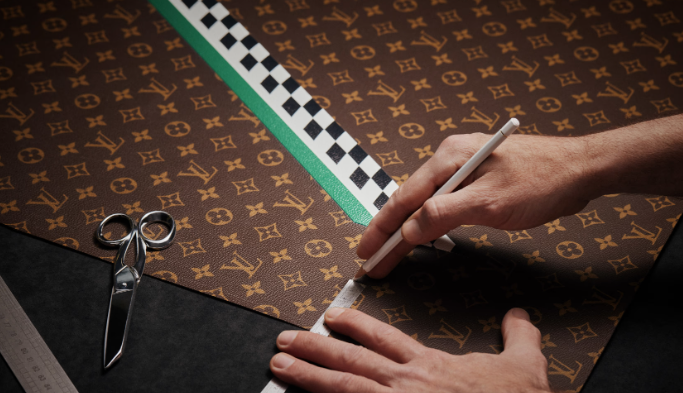
Limited production and scarcity are key factors that sustain Louis Vuitton’s luxury positioning. By controlling output and offering exclusive customizations, packaged with high-end leather bag making solutions like Louis Vuitton box and dustbag, LV ensures each bag retains its uniqueness, creating demand pressure and high resale value. For procurement specialists and factory designers, understanding these strategies is crucial for planning production, sourcing materials, and managing special bag orders effectively. Comparing Hermes vs Louis Vuitton provides insights into rare leather sourcing, small-batch leather bag production, and boutique-only releases, helping B2B buyers evaluate cost structures and exclusivity practices.
1. Controlled Manufacturing and Supply
Louis Vuitton maintains strict control over manufacturing volumes to preserve exclusivity and scarcity.
Production Strategies:
- Small-batch production: Only a fixed number of each model is produced per season, ensuring each bag remains rare.
- Boutique-only release: Bags are distributed exclusively through LV boutiques or authorized high-end retailers, often accompanied by a Louis Vuitton dust bag or LV dust bag to enhance presentation.
- Quality inspection: Every item undergoes rigorous artisan checks to ensure that scarcity does not compromise quality.
Procurement and Factory Implications:
- Material forecasting must align with made-to-order and seasonal exclusives, minimizing waste while meeting demand.
- Rare leather sourcing and premium canvas must adhere to strict quality standards for limited editions.
- Lead time planning is critical to accommodate private orders and custom color palettes, ensuring timely delivery without overproduction.
2. Customization and Special Orders
High-end clients often request bespoke options, such as personalized embossing, custom hardware, or exclusive color choices. These add complexity to the supply chain but enhance brand prestige and product desirability.
Customization Features:
- Personalized embossing and bespoke embroidery on leathers for initials or logos.
- Exclusive hardware and finishes, including LV custom-plated buckles and rivets.
- Special color palettes and made-to-order designs for seasonal or one-off bag collections.
B2B and Factory Considerations:
- Factories need flexible bag production planning to handle small batches and private leather bag orders.
- Traceable materials must be carefully logged to ensure accuracy and compliance.
- Customization requires additional artisan craftsmanship and careful packaging with Louis Vuitton dust bags, impacting both cost and delivery timelines.
Louis Vuitton’s scarcity and customization strategy combines small-batch leather production, boutique-only releases, and bespoke bag options. For B2B buyers and factory partners, understanding these mechanisms is crucial for sourcing, planning, and cost management. By leveraging rare leather sourcing, artisan craftsmanship, and high-end leather bag packaging solutions, LV maintains its limited edition bags appeal, reinforcing exclusivity, brand prestige, and long-term resale value. Comparing Hermes Louis Vuitton strategies provides valuable benchmarks for implementing best practices in luxury bag production.
Brand Reputation and Market Positioning
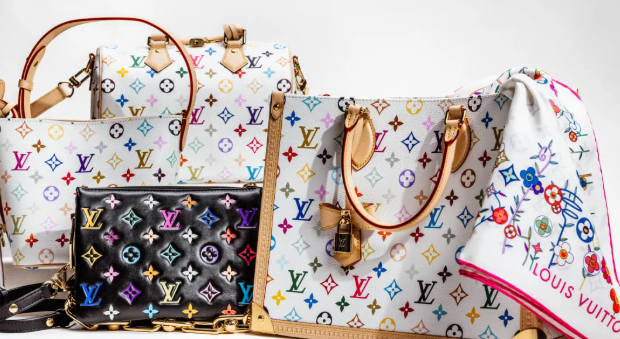
Louis Vuitton’s high market value is strongly supported by its global prestige and strategic branding efforts. The brand’s presence in flagship stores worldwide, along with celebrity endorsements, has cemented LV as a symbol of luxury and status. High-profile clients and influencers often showcase LV pieces, from Louis Vuitton dust bags to exclusive limited edition bags, which further amplifies desirability and perceived value.
Strategic Marketing and Brand Image

LV carefully manages its marketing to maintain a perception of exclusivity. Limited edition releases, seasonal collections, and boutique-only items create scarcity and anticipation. The brand invests in high-end packaging solutions, such as the Louis Vuitton box and dustbag, providing an elevated unboxing experience that enhances customer satisfaction and reinforces luxury positioning. For B2B buyers and factory partners, understanding these marketing and positioning strategies helps in planning production, customizing orders, and aligning with brand expectations. Comparing Hermes vs Louis Vuitton provides valuable insights into how different luxury brands leverage exclusivity, celebrity influence, and curated distribution to justify premium pricing.
How Do Luxury Brands Leverage OEM and Private Label Partnerships?
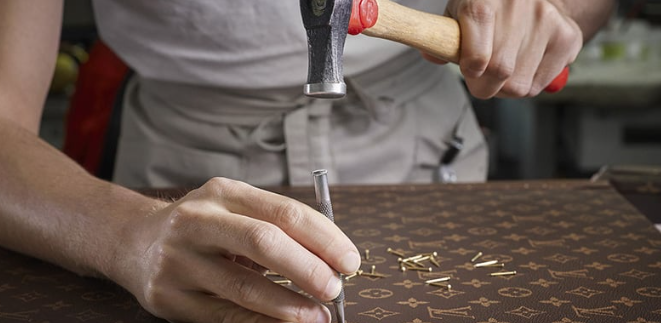
Luxury brands like Louis Vuitton often collaborate with trusted manufacturing partners, such as Sunteam, through OEM (Original Equipment Manufacturer) or private label arrangements. These partnerships allow brands to maintain strict quality control, access specialized materials, and scale production efficiently while preserving exclusivity.
Key Advantages of OEM/Private Label Collaboration:
Consistent Craftsmanship: Factories like Sunteam provide skilled artisans and controlled production processes, ensuring that every bag meets the high standards expected of LV products.
Material Sourcing and Innovation: Partner factories can supply premium leathers, rare canvases, and custom hardware, or assist with sustainable alternatives, while offering traceability and ethical sourcing.
Flexible Production for Custom Orders: OEM leather bag partners can handle small-batch, seasonal, or personalized leather bag orders, including custom colors, embossing, or hardware, without disrupting overall production schedules.
Brand Control and Confidentiality: These collaborations allow LV to maintain leather bag brand integrity, ensuring that designs, materials, and packaging (e.g., Louis Vuitton box and dustbag) remain consistent across all products.
For B2B buyers, factory managers, and designers, understanding how LV leverages Sunteam and similar bag partners provides insight into how luxury brands balance exclusivity, quality, and scalability, while ensuring premium pricing is justified.
Conclusion
Louis Vuitton bags command premium prices for multiple reasons. Their value is rooted in a combination of heritage and leather bag brand legacy, artisan craftsmanship, premium materials such as full-grain leather and Monogram/Damier canvas, limited leather bag production and scarcity, and strong leather bag market positioning. Each bag, accompanied by a Louis Vuitton dust bag or LV dust bag, represents not only a luxury product but also a long-term investment with potential resale value.
For B2B buyers, factory partners, and designers, understanding these factors is critical when sourcing, producing, or customizing LV limited edition bags, ensuring alignment with brand standards and maintaining the high-end appeal that Louis Vuitton is renowned for. By combining meticulous production, exclusivity, and strategic marketing, LV continues to set the benchmark for luxury handbags, making every bag a coveted piece worldwide.



